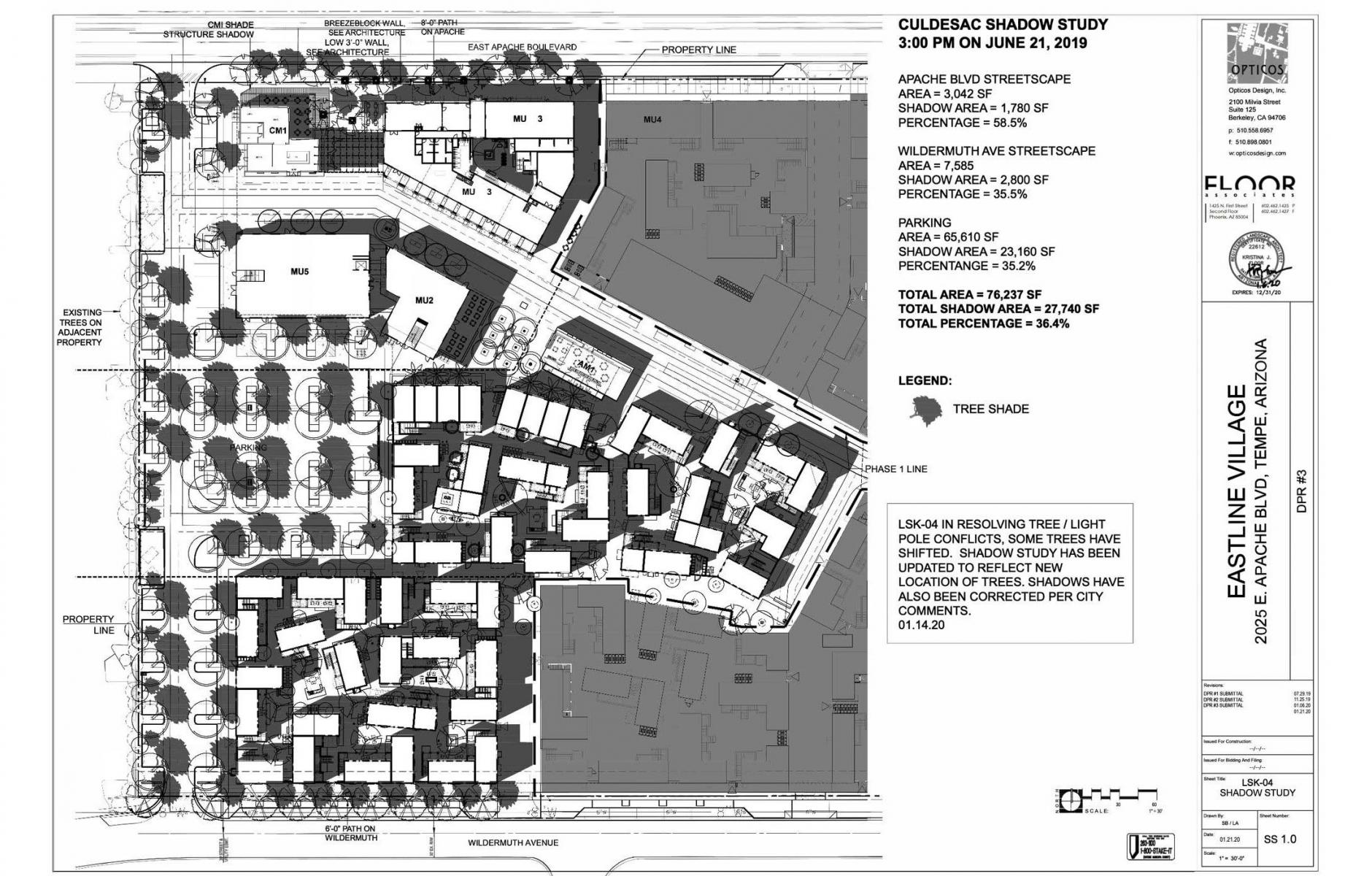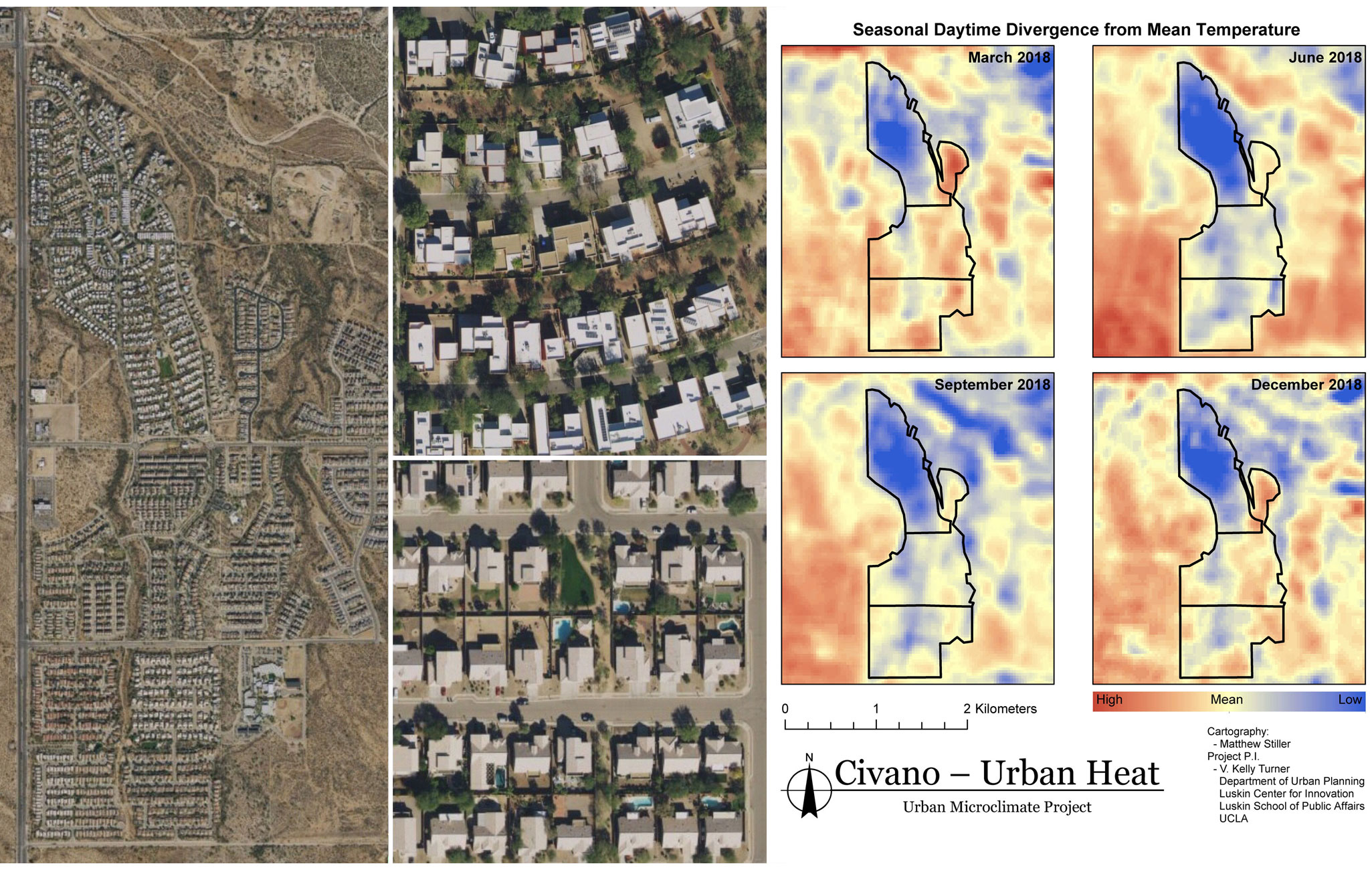
Community has it made in the shade
As a heat dome hovers over the eastern and southern US, the topic of heat and urbanism is especially important. Most people associate urbanism with heat islands—which make urban places hotter—but that’s not always the case.
Design choices can cool down urban places and make them more comfortable even on hot days. Extreme heat is common in Tempe, Arizona, in the Phoenix region, where daily mean highs are above 100 degrees F from June through September.
Culdesac Tempe was designed with “desert-responsive” urbanism, inspired by traditional settlements in dry, hot climates. It has a transit-supportive density of about 40 units per acre, yet it supports walking even in the brutal Arizona summer sun. Walking must be appealing in Culdesac since it is designed as a “car-free” community where residential units have no automobile parking.
The development achieves that by eliminating asphalt—walkways are dirt or white concrete. The buildings themselves are white, with roofs that reflect the sun. Most importantly, Culdesac pathways feature continuous shade from buildings and trees.
The image at the top shows shade at 3 p.m. on June 21, the day the sun is at its peak. Residents can walk almost anywhere in Culdesac, including to the store or the transit stop, under shade. This “shade study” was posted by Culdesac's architect and planner Dan Parolek of Opticos Design. Parolek asks, “Why would anyone walk in hot climates? Because you give them continuous shade along their routes as shown by this shadow study for Culdesac Tempe done by my team Opticos Design Inc. during submittals.”
This shade will grow as the trees grow in this community.
Although the heat in Culdesac has not been subject to scientific study, anecdotally it is much cooler than the surrounding, less dense areas in Tempe. The new urban development of Civano, in Tucson, Arizona, has been studied. The blue in the heat maps below is the walkable neighborhood in Civano, compared to nearby conventional subdivisions.

Civano is significantly cooler and uses similar design techniques as Culdesac. Urbanism, with a proper focus on shade and reflective surfaces, has a real cooling impact. In a world where hot summer days become more common, cities and towns can use these techniques to make walkable urban places more comfortable and livable. If it works in southern Arizona, it will work in New York, DC, Atlanta, or Miami.
Below, Parolek takes you on a recently posted walk on of one of Culdesac's pathways. This shows you exactly how a community can be designed for shade and comfort even under the Arizona sun.




